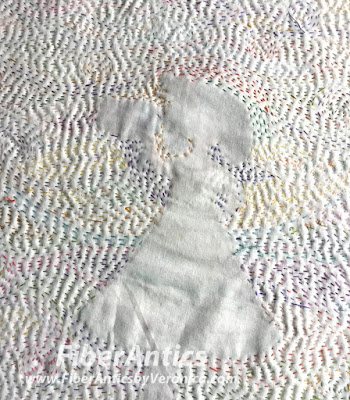 |
| When does a 1/4" really matter? |
To protect the innocent, I won't show a picture of the quilt design, but will say that the objectives for the project were as follows:
- to mix a variety of scraps with one background fabric
- an opportunity to try improv patchwork
- quilt size: throw or couch quilt
- experience level: confident beginner
The first read-through
On first review of cutting instructions, here's what was specified:
From the background fabric cut:
3 pieces 42" x 6"
1 piece 42" x 6.25"
1 piece 42" x 6.5"
Really? REALLY?? The difference between 6" and 6.25" or between 6.25" and 6.5" is A QUARTER OF AN INCH! And once those strips are pieced together with the patchwork/improv strips (and even if the maker did nail the 1/4" seam allowances) who's gonna see the difference between a 6" wide strip, a 6.25" wide strip and a 6.5" wide strip???... on a throw size quilt? (I think nobody.)
Oh, and when the quilt's washed and the fabric gets all crinkley... ya think you could tell the diff' then?
Would it not be easier and pragmatic to cut 5 pieces 42" x 6"? [or 5 pieces 42" x 6.5"]? (I gently reminded the designer that the pattern's objective was "easy improv.")
--------------
Pattern writers have a responsibility
OMGosh, folks. Pattern designers/writers... be kind to those that will make your projects! Pattern designers have a responsibility to be clear, accurate, concise, and present the information and directions in an organized format (visually and in written form). I listened to an interview with Sam Hunter of Hunter's Design Studio and she talked about writing patterns (and re-writing poorly written or confusing ones) and she was right on. It's not easy—or fast—if done correctly. But if you have that skill, talent or passion for creating patterns, and execute the process with your reader in mind, your patterns are golden. (I've used one of Sam Hunter's and it was great!)
If you attempt pattern writing, put yourself in the shoes of those that purchase or will use your pattern—and be accountable. Makers will not only appreciate it, but they will be more successful and feel confident to make the "next something" that catches their eye.
Consumers have a responsibility, too!
And the other side of that coin? When you purchase a pattern, please adhere to copyright laws! Read Sam's post on the ultimate effect of stealing patterns.





























